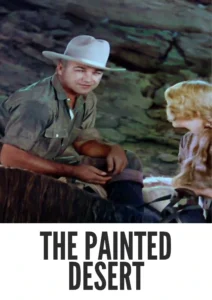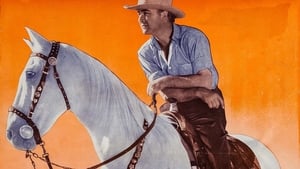Contact: [email protected]
Video Sources 0 Views
- The Painted Desert


The Painted Desert 1931 First Early Colored Films Version
Synopsis
Table of Contents
ToggleReview: The Painted Desert (1931) – A Classic Western Epic Restored in Vibrant Color

Introduction
“The Painted Desert” (1931) stands as a testament to the enduring allure of the Western genre and the timeless appeal of tales set against the backdrop of the American frontier. In this review, we’ll explore the significance of this early colored film, examining its impact on audiences and its enduring legacy in the realm of cinematic history.
Check The Full Colorized Movies List
Check Our Colorized Movies Trailer Channel
Understanding The Painted Desert 1931: Director, Cast, and Genre
Directed by Howard Higgin, “The Painted Desert” (1931) exemplifies the director’s mastery of the Western genre, weaving together a tale of friendship, betrayal, and redemption against the sweeping landscapes of the American Southwest. The film features a talented cast, including iconic actors like Clark Gable, William Boyd, and Helen Twelvetrees, whose performances bring the characters to life with authenticity and depth. With its blend of action, drama, and romance, “The Painted Desert” (1931) captures the essence of the Old West and transports audiences to a bygone era of adventure and excitement.
Exploring the World of The Painted Desert 1931: Plot and Characters
At its core, “The Painted Desert” (1931) follows the intertwining fates of two friends, played by Clark Gable and William Boyd, whose bond is tested by love and betrayal. Set against the majestic backdrop of the Painted Desert, the film unfolds with all the drama and tension of a classic Western, as the characters navigate the treacherous terrain of greed, ambition, and honor. Along the way, they encounter a colorful cast of characters, from ruthless outlaws to noble lawmen, each adding depth and dimension to the rich tapestry of the story.
The Art of Film Colorization
Film colorization has long been a controversial topic in the world of cinema, with purists arguing that it compromises the integrity of classic films, while others see it as a way to breathe new life into beloved movies. In the case of “The Painted Desert” (1931), the decision to restore the film in vibrant color opens up new avenues for appreciation, allowing audiences to experience the beauty of the American Southwest in all its glory.
Early Colored Films: A Brief History
The history of colored films stretches back to the early days of cinema, with filmmakers experimenting with various techniques to add color to their creations. From hand-tinted frames to early Technicolor processes, the evolution of colored film has been marked by innovation and ingenuity, paving the way for the development of modern colorization techniques that continue to captivate audiences today.
The Painted Desert 1931 and Its Early Colored Version
The decision to release “The Painted Desert” (1931) in a colorized format was met with both excitement and skepticism. While some welcomed the opportunity to experience the film in vibrant color, others expressed concerns about the potential impact on its visual aesthetic. Nevertheless, the early colored version of “The Painted Desert” (1931) offers viewers a fresh perspective on the classic Western, enhancing its immersive qualities and bringing its stunning landscapes to life in vivid detail.
The Debate Over Film Colorization
The debate over film colorization continues to rage on, with passionate arguments on both sides of the divide. Proponents argue that colorization breathes new life into classic movies, making them more accessible to modern audiences, while detractors maintain that it compromises the artistic integrity of the original work. As technology continues to advance, filmmakers and audiences alike are left to grapple with the complexities of colorization and its impact on the cinematic landscape.
Examining The Painted Desert 1931 as an Early Colored Film
As with any colorized classic, the impact of colorization on “The Painted Desert” (1931) is a matter of personal interpretation. Some may argue that it enhances the film’s visual appeal and immerses viewers in its world, while others may feel that it detracts from the stark beauty of the original black and white version. Regardless of one’s stance on the issue, there’s no denying the enduring power of “The Painted Desert” (1931) as a timeless Western epic that continues to captivate audiences with its sweeping vistas and gripping narrative.
Influence and Legacy: The Painted Desert 1931’s Impact on Cinema
“The Painted Desert” (1931) has left an indelible mark on the world of cinema, inspiring countless filmmakers and captivating audiences with its timeless tale of friendship and redemption. From its breathtaking cinematography to its unforgettable performances, the film continues to resonate with viewers of all ages, reaffirming its status as a beloved classic of the Western genre.
Director’s Cinematic Legacy: Beyond The Painted Desert 1931
Howard Higgin’s influence extends far beyond “The Painted Desert” (1931), with a diverse body of work that continues to captivate audiences around the globe. From his pioneering efforts in the Western genre to his groundbreaking work in social dramas, Higgin’s films are celebrated for their depth, complexity, and emotional resonance. Through his visionary storytelling and masterful direction, Higgin has left an indelible imprint on the world of cinema, inspiring generations of filmmakers to follow in his footsteps.
Themes Explored in The Painted Desert 1931
“The Painted Desert” (1931) explores a myriad of themes, from the bonds of friendship to the pursuit of justice in a lawless land. Through its richly drawn characters and evocative storytelling, the film invites viewers to ponder the complexities of the human condition and the timeless truths that bind us together as a society. As audiences immerse themselves in the world of “The Painted Desert” (1931), they are reminded of the enduring power of friendship, honor, and redemption to triumph over even the greatest of obstacles.
Reception and Controversy Surrounding The Painted Desert 1931
Upon its release, “The Painted Desert” (1931) received widespread critical acclaim, with many praising its breathtaking cinematography, gripping narrative, and unforgettable performances. However, the decision to release the film in a colorized format sparked debate among purists, reigniting the age-old discussion surrounding film preservation and artistic integrity. Despite the controversy, “The Painted Desert” (1931) remains a beloved classic that continues to resonate with audiences of all ages, reaffirming its status as a timeless masterpiece of the Western genre.
Where to Watch The Painted Desert 1931 Online
For those eager to experience the timeless magic of “The Painted Desert” (1931), the film is readily available on popular streaming platforms such as Netflix, Amazon Prime, and Hulu. Whether you choose to watch it in its original black and white format or the early colored version, “The Painted Desert” (1931) promises to transport you to a world of adventure and excitement, where the spirit of the Old West comes alive in vivid detail.
FAQs About The Painted Desert 1931
Q: Is “The Painted Desert” (1931) based on a true story? A: No, “The Painted Desert” (1931) is a fictional tale crafted by screenwriter Edna Ferber, who drew inspiration from her own experiences and observations of the American frontier.
Q: Who are the main actors in “The Painted Desert” (1931)? A: “The Painted Desert” (1931) features a talented ensemble cast, including iconic actors like Clark Gable, William Boyd, and Helen Twelvetrees, whose performances bring the characters to life with authenticity and depth.
Q: What awards did “The Painted Desert” (1931) win? A: While “The Painted Desert” (1931) did not win any major awards, it received critical acclaim for its breathtaking cinematography, gripping narrative, and unforgettable performances.
Q: Why was “The Painted Desert” (1931) released in a colorized format? A: The decision to release “The Painted Desert” (1931) in color was made to introduce the film to a new generation of viewers and enhance its visual appeal for modern audiences. While the choice to colorize the film sparked debate among purists, it ultimately allowed “The Painted Desert” (1931) to reach a wider audience and ensure its continued relevance in the annals of cinematic history.
Conclusion
As we reflect on the enduring legacy of “The Painted Desert” (1931), let us celebrate its status as a timeless classic that continues to captivate audiences with its sweeping vistas, gripping narrative, and unforgettable performances. Whether viewed in its original black and white format or the early colored version, “The Painted Desert” (1931) remains a shining example of the power of cinema to transport us to another time and place, where the spirit of the Old West lives on in all its glory.










